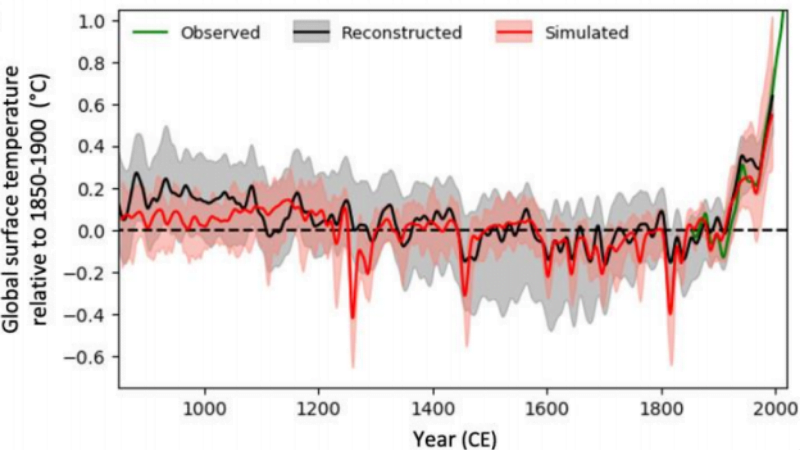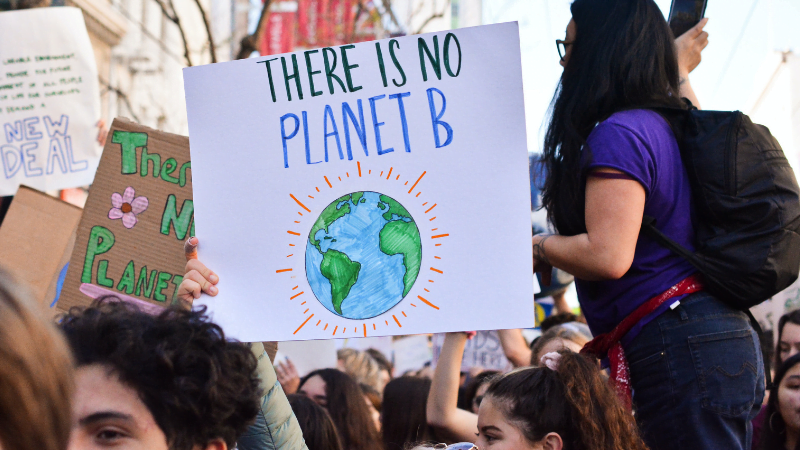Parts of the Maltese islands are at risk of disappearing unless urgent action is taken to protect stretches of the coast, Professor Maria Attard, director of the Institute for Climate Change at the University of Malta, has warned.
Attard was speaking to The Shift about her initial reaction to the damning findings of a climate report which says that the world will see a dangerous increase in global temperatures 20 years earlier than expected.
The Mediterranean sea is facing rising sea levels of roughly 70cm by the end of the century, Attard explained. “Sea level increases are different for different parts of the world. The Mediterranean is a closed sea and unless the models have been revised, the sea level rise set for the end of this century is less than a metre”.
“The problem here is not Malta sinking beneath the water, it is more the infrastructure that will be affected by this rise in sea level, including critical infrastructure such as port areas,” Attard said, referring to a 2015 paper in which she highlighted how Malta’s roads, ports and aerial network would all suffer considerable damage as the climate crisis unfolds, with economic woes arising particularly from Malta’s dependence on imports and private transport.
“Many other islands in the world’s oceans, however, will not be as lucky and are destined to disappear completely,” she added.
Malta has already experienced three major heatwaves in the first two months of summer, escalating a process of desertification that is occurring across the southern Mediterranean basin. On 9 August, local councillor Steve Zammit Lupi shared images of fires which occurred in Wied Qirda and Wied Girgenti.
While Zammit Lupi did not rule out the possibility of human activity directly starting the fires in question, he argued that “the enormous dryness which we are experiencing does not help”, referring to soaring temperatures and the arid currents of air being experienced in the Maltese islands.
“The increase beyond 1.5 and 2 degree Celsius might see an acceleration of the predicted impacts like increased droughts and events such as extreme temperatures and harsher flooding,” Attard said, adding that these events are already commonplace.
“A drive in the countryside is already showing how endemic trees are falling victim to drought and heat, despite being endemic and supposedly able to take on heat and drought,” she added.
Attard also criticised the government’s slow response to the crisis, referring to how the European Commission had repeatedly described several major aspects of Malta’s Energy and Climate plan as “unambitious,” noting that “there have been very few effective actions that politicians have implemented to cut on the main sources of emissions in Malta”.
A locally-based videographer and producer, Maxime Durand, sought to highlight the extent of climate change’s immediate effects by publishing a compilation of photographs which detailed extreme weather events across a total of 39 countries in the span of just two months. With the videographer’s permission, The Shift reproduced some of the shocking images compiled by Durand in video format.
The report, published by the Intergovernmental Panel on Climate Change (IPCC), has sent shockwaves across the world as its most recent climate change predictions unequivocally confirm that the world is set to see a temperature increase of 1.5 degrees Celsius by 2030, 20 years before expected.
The threshold of a global increase of 1.5 degrees Celsius marks a point of no return for the world’s major biological systems. This critical threshold was set in 2015 via the Paris climate agreement as the limit beyond which the effects of climate change would be disastrous.
Such an increase would lead to levels of climate change which would wreak havoc on key pillars of society such as agriculture, natural ecosystems, infrastructure and healthcare, with countries struggling to adapt to disruption caused by climate change.
The 4,000-page report, by far the most extensive study of climate change and its effects across the globe carried out to date, also highlights how every region across the world is experiencing more extreme weather events that are occurring out-of-season and with more intensity than ever recorded before.
The research conducted by the IPCC concludes beyond any reasonable doubt that the effects of climate change are a direct result of human activity, with greenhouses gases such as carbon dioxide and methane being directly responsible for inevitable temperature increases.
The world’s possible scenarios
The report takes into account five possible scenarios, known as ‘shared economic pathways’ (SSPs), in which greenhouse gas emissions, the main gases created by human activity which lead to global warming, are dealt with varying response levels.
The IPCC’s most optimistic scenario, short-handed as SSP1-1.9, visualises what temperature increases look like if the world manages to cut down carbon dioxide emissions down to zero by 2050.
If this is done, humanity will very nearly avoid irreversible disaster as temperatures would increase by 1.5 degrees Celsius but then stabilise at +1.4 degrees by 2100.
Although humanity would still see massive changes that would displace millions of climate refugees seeking shelter from extreme weather, SSP1-1.9 is the best possible outcome considering the damage that has already been done since the industrial revolution.
For such a scenario to occur, humanity would have to radically alter its course by shifting towards prioritising wellbeing over economic development and addressing wealth inequality by prioritising investment in education, healthcare and increasing the density of ‘carbon sinks’ such as forests.
Should humanity’s current rate of consumption and competition for resources between countries increase, carbon dioxide emissions would also increase.
The worst-case scenario, SSP5 – 8.5, envisages what would occur if current carbon dioxide emissions levels were to double by 2050: while the economy would continue growing quickly due to the intensification of human activity, the average global temperature would increase by 4.4 degrees Celsius by 2100, an increase which would destabilise ice sheets and make entire countries unfit for human life.
The report’s authors maintain that the accuracy of their prediction models is largely subject to the various, complex interactions occurring between different factors related to climate change as well as ‘tipping point’ events which could radically alter the speed at which other events occur.

Global temperatures over the last two millennia. Source: IPCC Assessment Report
One example relates to the IPCC’s previously conservative estimate of time left for the 1.5 degrees Celsius increase in temperature to be reached. The report published this year is the sixth version of the IPCC’s assessment report.
The prediction had been thrown off by a temporary cooling of global temperatures due to the use of aerosol chemicals such as CFCs, which used to be widely deployed in cooling systems for kitchen appliances, for example.
When it was eventually discovered that CFCs were also thinning the ozone layer, they were replaced by other, lighter aerosol chemicals and use was generally decreased, leading to a reduction in their overall temporary cooling effect on the planet.
As for major events, significant natural disasters such as a volcanic eruption or a collapse in the world’s major ocean currents arising from waters being cooler (due to melting ice caps, for example) or hotter (warming of surface temperatures) than they should be, could radically slow down or accelerate the process of global warming, respectively.
Another element that leads to more unpredictability is the fact that many of the world’s various ecosystems are slow to react to changes. Oceans will still be reacting to increases in global temperatures decades after the increases occur, for example.
Similarly, massive ice sheets such as the one in Greenland also adjust to increased temperatures over decades, with potential tipping point events including the loss of ice sheets which would take millennia to replace.
















Mother earth is going through changes and so are we, nature knows what needs to be done but the question is…are WE ready for the change?